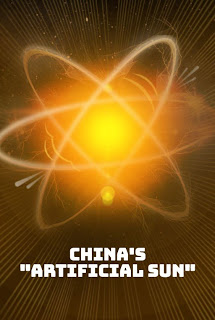Summary:
China’s HL-2M nuclear fusion device burns with the power of 13 suns Chinese scientists are working on harvesting the energy of the Sun, but it's not solar energy. The country has developed its very own “artificial sun,” a nuclear fusion research device that is supposed to pave the way for clean energy -- similar to the real Sun.The completion of the reactor was announced on Tuesday, and it’s expected to start operation in 2020, Xinhua News reported. China’s completed ‘artificial sun’ to start operation in 2020
Topics:
Mike Norman considers the following as important:
This could be interesting, too:
China’s HL-2M nuclear fusion device burns with the power of 13 suns Chinese scientists are working on harvesting the energy of the Sun, but it's not solar energy. The country has developed its very own “artificial sun,” a nuclear fusion research device that is supposed to pave the way for clean energy -- similar to the real Sun.The completion of the reactor was announced on Tuesday, and it’s expected to start operation in 2020, Xinhua News reported. China’s completed ‘artificial sun’ to start operation in 2020
Topics:
Mike Norman considers the following as important:
This could be interesting, too:
Robert Vienneau writes Austrian Capital Theory And Triple-Switching In The Corn-Tractor Model
Mike Norman writes The Accursed Tariffs — NeilW
Mike Norman writes IRS has agreed to share migrants’ tax information with ICE
Mike Norman writes Trump’s “Liberation Day”: Another PR Gag, or Global Reorientation Turning Point? — Simplicius
China’s HL-2M nuclear fusion device burns with the power of 13 suns
Chinese scientists are working on harvesting the energy of the Sun, but it's not solar energy. The country has developed its very own “artificial sun,” a nuclear fusion research device that is supposed to pave the way for clean energy -- similar to the real Sun.The completion of the reactor was announced on Tuesday, and it’s expected to start operation in 2020, Xinhua News reported.

